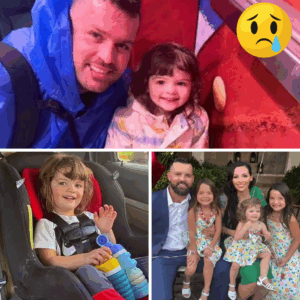In the shadow of New Britain’s weathered brownstones and quiet cul-de-sacs, where the hum of everyday life once masked unspeakable suffering, the final autopsy report on Jacqueline “Mimi” Torres-Garcia has dropped like a stone into still waters, sending ripples of outrage and grief across Connecticut. On November 7, 2025, Connecticut’s Chief Medical Examiner, Dr. James Gill, formally released the findings: the 11-year-old girl’s death was ruled a homicide, caused by fatal child abuse through deliberate starvation. Mimi, whose skeletal remains were unearthed from a foul-smelling plastic tote behind an abandoned Clark Street property just a month prior, weighed a heartbreaking 26 to 27 pounds at the time of her demise—a figure more akin to a toddler than an elementary schooler. As the report’s stark details emerge, it not only cements the charges against her mother, Karla Roselee Garcia, her ex-boyfriend Jonatan Nanita, and her aunt Jackelyn Garcia but also ignites a fierce reckoning with the systems that failed to shield a vulnerable child from the very hands meant to nurture her.
Mimi’s story, pieced together from unsealed arrest warrants, police interviews, and now this unyielding medical verdict, reads like a modern-day tragedy of neglect amplified by malice. Born in 2014 to Karla Garcia and Victor Torres, Mimi entered a world already fractured by her parents’ on-again, off-again relationship. Torres, a devoted father who fought for custody amid financial strains and relational discord, described their bond as one of fierce love punctuated by battles over everything from school choices to holiday visits. By age eight or nine, after a stint in her paternal grandmother’s care, Mimi split time between her parents under a joint arrangement. But in 2023, Karla’s life took a darker turn. She began a tumultuous romance with Nanita, a 30-year-old with a rap sheet dotted by prior incarcerations for theft and assault. The couple, scraping by on low-wage jobs and public assistance, relocated to a cramped condominium on Wellington Drive in Farmington—a space that would become the stage for Mimi’s slow unraveling.
Warrants paint a portrait of escalating torment starting in the fall of 2024. Mimi, a spirited girl with a penchant for drawing unicorns and belting out pop songs, clashed with her mother over the announcement of Karla’s new pregnancy. What began as a typical mother-daughter spat spiraled into something sinister. Karla initially told detectives that Mimi, in a fit of anger, shoved her down the stairs, prompting Nanita to intervene violently—kicking the child in the head and dragging her away. But as interrogators peeled back layers, Karla’s narrative fractured. Confronted with preliminary medical findings, she confessed to a regimen of abuse: zip-tying Mimi’s wrists and ankles, isolating her in a bedroom, and rationing food to mere scraps. “She died in her bed,” Karla allegedly admitted, her voice flat in the interrogation tape transcripts. “I don’t know exactly when.” Nanita, downstairs at the time, later discovered the unresponsive girl and, in panic, relocated her body to the basement, cramming it into a 40-gallon plastic tote lined with a laundry basket and bedding. To mask the inevitable stench, he doused the remains with ammonia—a chemical veil that would complicate the autopsy months later.
The Chief Medical Examiner’s report, delivered after exhaustive analysis of the desiccated remains, shatters any illusion of accident. Dr. Gill’s team, working from dental records and DNA matches confirmed on October 9, 2025, noted the profound emaciation: protruding ribs, atrophied muscles, and a complete absence of subcutaneous fat that made estimating the time of death a forensic puzzle. Decomposition, accelerated by the ammonia’s caustic bite, had mummified the body, but toxicology and tissue samples revealed no drugs, no blunt force trauma consistent with a fatal fall or blow. Instead, the verdict zeroed in on chronic malnutrition as the executioner—weeks, if not months, of calculated deprivation that eroded Mimi’s vital organs until her heart simply gave out. “Fatal child abuse with starvation,” Gill confirmed to reporters, his tone measured but laced with the weight of implication. Manner of death: homicide. This wasn’t a fleeting lapse; it was a sustained campaign of cruelty, the report implies, where hunger became the weapon of choice.
As the tote lurked in secrecy, the family’s facade held—just barely. From September 2024 to March 2025, Karla, Nanita, and Mimi’s younger sister endured in the Farmington condo, the basement a forbidden crypt. Neighbors, disturbed by nocturnal disturbances, summoned police four times over five months. Bodycam footage from the sole contact on December 29, 2024, released by Farmington PD on October 29, 2025, captures the chilling banality. Officers knock amid reports of screams and thuds; Karla opens the door, Nanita looming behind like a reluctant sentinel. “We’ve had complaints since we moved in,” she sighs, blaming phantom upstairs neighbors. When asked about children, Nanita mentions only his toddler son from a prior relationship. Mimi? Her sister? Erased from the conversation, as if they’d never existed. The officers, chatting idly about holiday plans, depart none the wiser. A separate DCF tip about bruises on the younger sibling prompted a welfare check, but the family allegedly coached the surviving child to impersonate Mimi, dodging scrutiny once more.
By spring 2025, the odor—pungent, inescapable—forced a relocation to New Britain. The tote, now a grotesque companion, shadowed them to Karla’s shared apartment with her sister Jackelyn. Eviction loomed in early October, and with it, desperation. Karla, unraveling under the strain, enlisted Nanita—freshly paroled from an unrelated stint—for disposal. He scouted sites: a cemetery too public, before settling on the overgrown lot behind 80 Clark Street, an eyesore of a vacant house. On October 8, 2025, two of Nanita’s acquaintances, haunted by his offhand confessions, investigated the spot. Peering inside, they recoiled at the fetal-curled skeleton dusted with powder. A 911 call unleashed the storm: New Britain PD swarmed, forensics teams extracted the remains, and by evening, Karla and Jackelyn were in custody. Nanita, tipped to the raid, bolted—pilfering cars, crashing at motels, his phone pinging a frantic zigzag across Waterbury and Middletown. Bodycam from his October 13 takedown in a Waterbury parking lot, aired November 7 alongside the autopsy, shows a raw melee: officers barking “Hands up!” as he thrashes, cuffs biting into wrists before he’s pinned, rights recited over his curses.
Interrogations that followed were a hall of mirrors, each suspect deflecting blame. Karla accused Nanita of the fatal stomp; he countered she’d orchestrated the starvation, finding Mimi cold one dawn. Jackelyn, tear-streaked, admitted knowing of the abuse but silenced by familial loyalty—her charges: cruelty to a minor, unlawful restraint, reckless endangerment, and multiple counts of risk of injury. The medical report, brandished like a gavel, dismantled their alibis. No head trauma, no stairwell contusions—just the silent killer of want. Victor Torres, Mimi’s father, shattered by a brother’s relayed tip from Nanita himself, poured out his regrets to detectives: ignored custody pleas, thwarted DCF visits, a system blind to the red flags. “I begged for more time with her,” he told investigators, his affidavit a raw elegy. Karla had withdrawn Mimi from public school under homeschooling pretexts, severing another safety net.
On November 10, 2025, as a crisp autumn wind scatters leaves across Clark Street’s impromptu memorial—teddy bears piled high, photos of Mimi’s beaming smile flickering in candlelight—the accused trio awaits arraignment in Torrington Superior Court. Bonds hover at stratospheric $10 million apiece for Karla and Nanita, $1 million for Jackelyn, their court dates a gauntlet of stoic shuffles in jumpsuits. Additional tampering charges loom for Nanita, his evasion a chapter in a fugitive saga that captivated local news. Farmington’s Wellington Drive condo, taped off as a secondary scene, echoes with the ghosts of unchecked noise complaints. DCF, under fire, defends its protocols even as lawmakers decry the lapses—another homeschool horror in a string of Connecticut tragedies.
Dr. Gill’s release isn’t mere bureaucracy; it’s a clarion call. Fatal child abuse via starvation—the phrase etches itself into public consciousness, evoking historical famines but rooted in intimate betrayal. Experts, poring over the details, highlight the insidiousness: hunger as control, a slow poison undetectable until too late. Mimi’s case joins a grim litany—cases like Gabriel Fernandez or the Hart family—where love twisted into lethality, and safeguards crumbled. Advocacy groups, from the National Center for Missing & Exploited Children to local child welfare coalitions, rally for reforms: mandatory homeschool check-ins, AI-flagged noise patterns, empowered tip lines that don’t fade into follow-up voids.
Yet amid the indictments and inquiries, Mimi Torres-Garcia emerges not as statistic but soul. Friends recall her skipping rope in apartment courtyards, her laughter a spark against the gray. Torres, channeling fury into foundation-building, vows memorials and policy pushes: “She deserved the world, not a box.” As November’s chill deepens, New Britain pauses—not just to mourn, but to mirror. How many basements harbor such secrets? How many cries go unanswered? The Chief Medical Examiner’s words, cold and clinical, demand warmth in response: vigilance, justice, a vow that no other Mimi withers unseen. In the end, her cause of death isn’t just starvation—it’s our collective failure to feed the light she carried. For Jacqueline “Mimi” Torres-Garcia, may the truth unearthed bring the peace denied in life.





